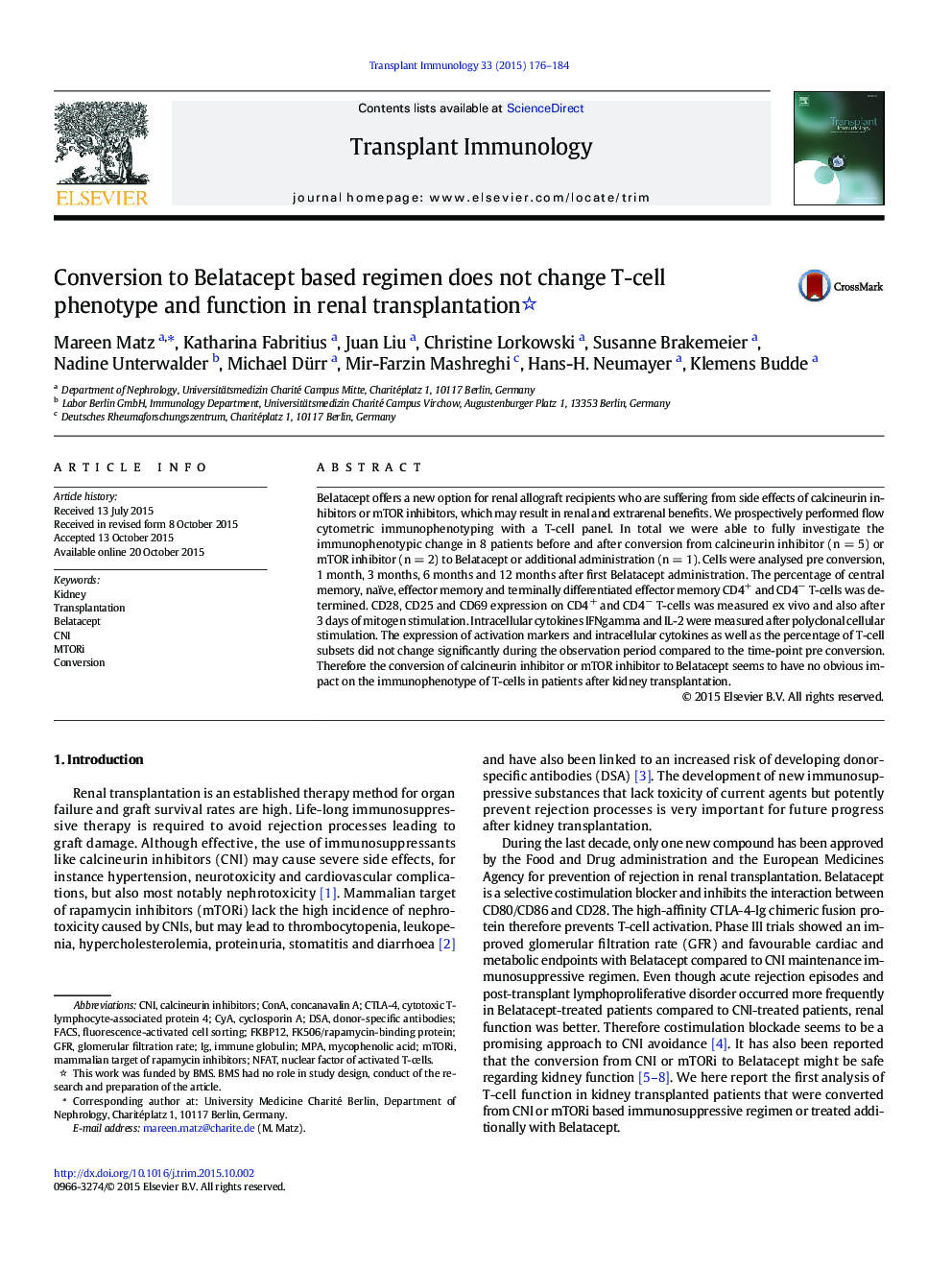| Article ID | Journal | Published Year | Pages | File Type |
|---|---|---|---|---|
| 3391874 | Transplant Immunology | 2015 | 9 Pages |
•We performed flow cytometric immunophenotyping of T-cells in renal transplantation.•Patients were converted from standard to Belatacept based regimen.•T-cell activation marker expression does not change after conversion.•T-cell intracellular cytokine expression does not change after conversion.•Effector/memory T-cell subpopulations do not change after conversion.
Belatacept offers a new option for renal allograft recipients who are suffering from side effects of calcineurin inhibitors or mTOR inhibitors, which may result in renal and extrarenal benefits. We prospectively performed flow cytometric immunophenotyping with a T-cell panel. In total we were able to fully investigate the immunophenotypic change in 8 patients before and after conversion from calcineurin inhibitor (n = 5) or mTOR inhibitor (n = 2) to Belatacept or additional administration (n = 1). Cells were analysed pre conversion, 1 month, 3 months, 6 months and 12 months after first Belatacept administration. The percentage of central memory, naïve, effector memory and terminally differentiated effector memory CD4+ and CD4− T-cells was determined. CD28, CD25 and CD69 expression on CD4+ and CD4− T-cells was measured ex vivo and also after 3 days of mitogen stimulation. Intracellular cytokines IFNgamma and IL-2 were measured after polyclonal cellular stimulation. The expression of activation markers and intracellular cytokines as well as the percentage of T-cell subsets did not change significantly during the observation period compared to the time-point pre conversion. Therefore the conversion of calcineurin inhibitor or mTOR inhibitor to Belatacept seems to have no obvious impact on the immunophenotype of T-cells in patients after kidney transplantation.
